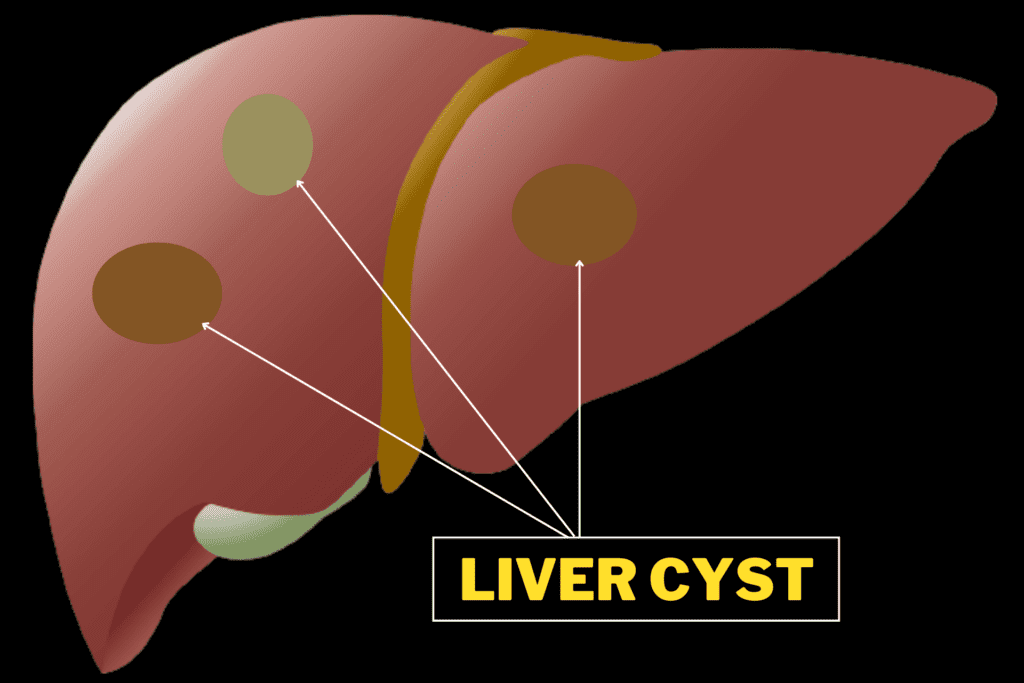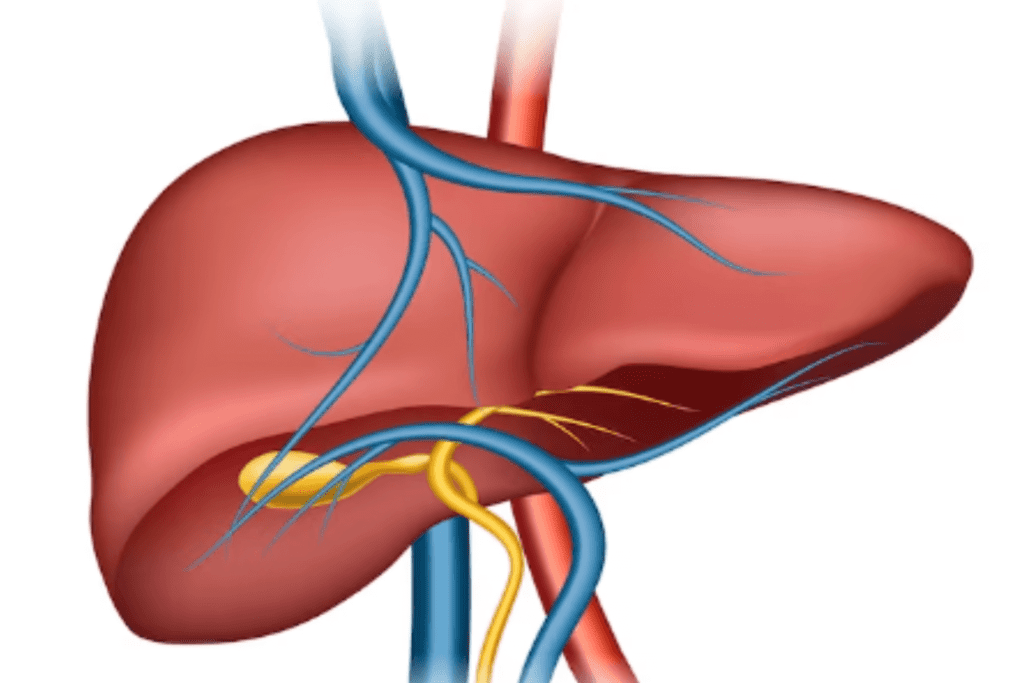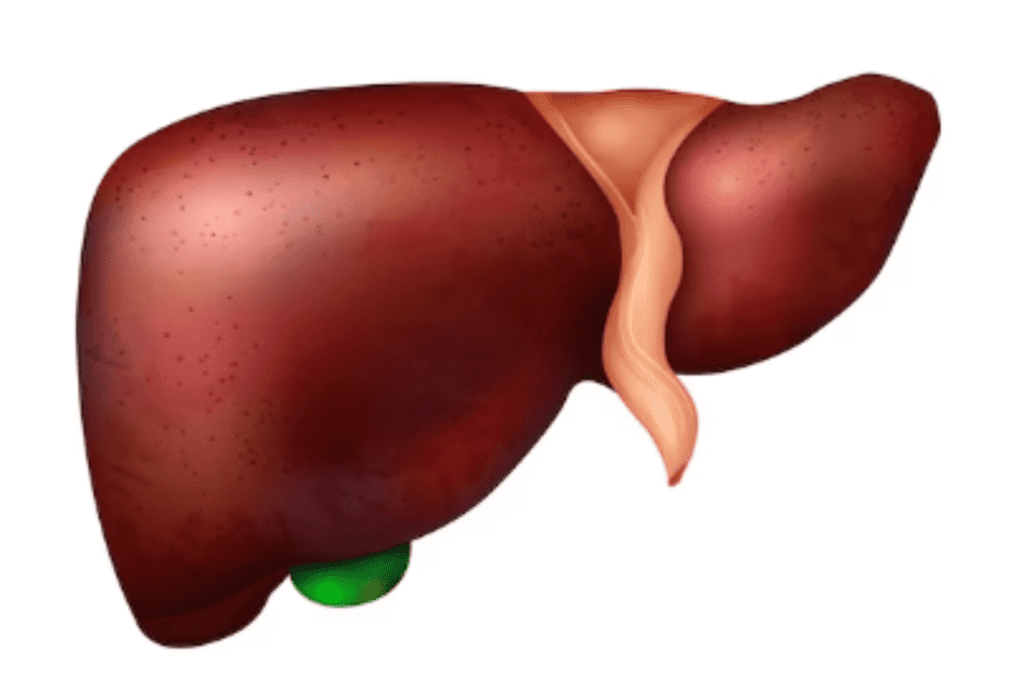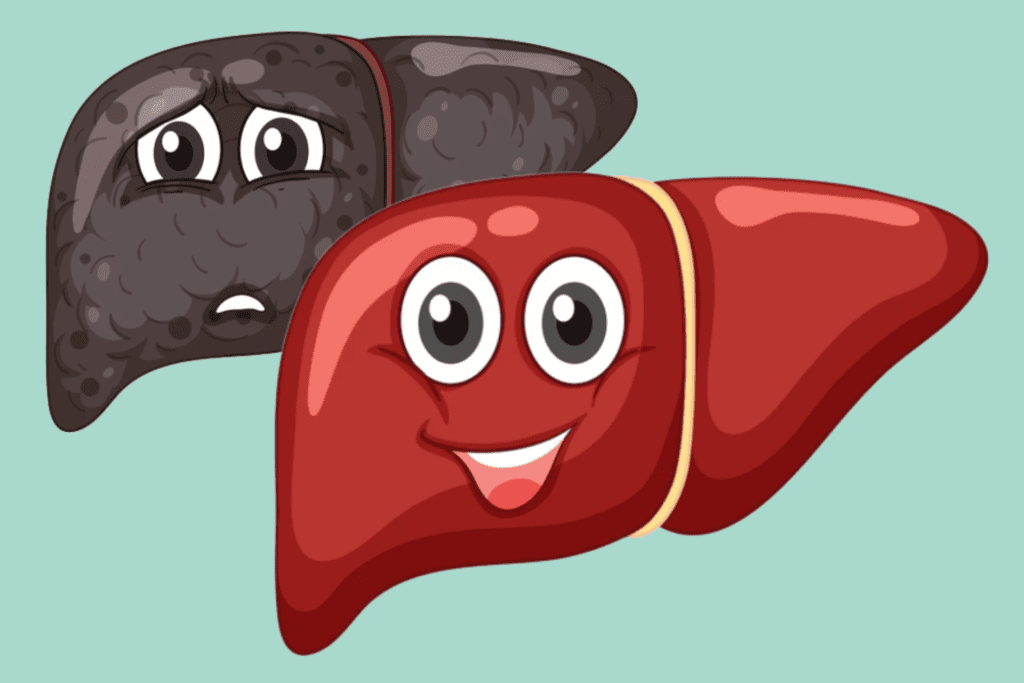A liver cyst (hepatic cyst) is a fluid-filled sac or pocket that develops within the liver tissue, usually resulting from the dilation of a small bile duct or a congenital anomaly. These cysts are typically benign and can vary in size. They are often discovered incidentally during medical imaging exams and are usually asymptomatic, but can cause discomfort or complications if they grow large or become infected.
Table of Contents
ToggleWhat Kind of Cysts Are in the Liver?
Two main types of cysts can develop in the liver:
Simple Liver Cysts

These represent the prevailing form of liver cysts. They are typically benign and filled with clear fluid. They do not usually require treatment unless they become large and cause discomfort.
Polycystic Liver Disease
This is a genetic condition characterized by the presence of numerous cysts of varying sizes throughout the liver. Polycystic liver disease can be associated with other health conditions, such as polycystic kidney disease. In some cases, these cysts can grow large and cause symptoms like abdominal pain, bloating, or difficulty eating. Intervention might be required for pronounced symptoms.
How Serious is a Cyst on the Liver?
In most cases, a cyst on the liver is not a serious health concern. The majority of liver cysts are benign (non-cancerous) and do not cause any symptoms or complications. These cysts are often discovered incidentally during medical imaging tests performed for other reasons, and they may not require any treatment or intervention.
However, the seriousness of a liver cyst can depend on several factors:
Size
Small cysts are generally less likely to cause problems than larger ones. Larger cysts might cause discomfort, pain, or other symptoms if they press against surrounding structures.
Location
The location of the cyst within the liver can influence its impact. Cysts near blood vessels, bile ducts, or other important structures might be more likely to cause symptoms or complications.
Symptoms
While many liver cysts are asymptomatic, some individuals might experience abdominal pain, bloating, discomfort, or other symptoms if the cyst grows large or if it becomes infected.
Complications
Complications such as infection (abscess formation) or cyst rupture can occur, although they are relatively rare.
Underlying Conditions
In cases of polycystic liver disease, where there are numerous cysts in the liver, there could be a greater risk of complications due to the sheer number and size of the cysts.
What Causes Liver Cysts?
The exact cause of liver cysts is not always clear, but there are a few factors that can contribute to their development:
Congenital Factors
Some liver cysts are present at birth and are believed to result from developmental anomalies in the bile ducts or other structures during fetal development.
Ductal Plate Malformation
This is a developmental abnormality that can lead to the formation of multiple small liver cysts. It is understood to be a hereditary genetic condition.
Polycystic Liver Disease
This is a hereditary condition in which multiple cysts develop in the liver. It is often associated with polycystic kidney disease and is caused by genetic mutations.
Simple Liver Cysts
The exact cause of most simple liver cysts is not well understood. They may develop due to the weakening of a small area in the liver’s tissue, leading to the formation of a cyst.
Echinococcosis
This condition arises from a parasitic infestation originating from the Echinococcus tapeworm. It can lead to the development of cysts in the liver (and other organs) known as hydatid cysts.
Infection or Trauma
In some cases, liver cysts can develop as a result of an infection or trauma to the liver.
What Are Liver Cyst Symptoms?
A significant number of liver cysts remain symptomless and do not provoke noticeable indications. However, in some cases, especially when the cysts are large or causing complications, they can lead to the following symptoms:
Abdominal Discomfort or Pain
Large cysts may cause a feeling of fullness, discomfort, or pain in the upper right side of the abdomen.
Bloating or Swelling
Cysts that grow large can lead to abdominal bloating or a sense of heaviness.
Nausea or Vomiting
Pressure from a cyst on surrounding organs can result in nausea or vomiting.
Difficulty Eating
Larger cysts might compress the stomach or intestines, causing difficulties with eating or early feelings of fullness.
Jaundice
In rare cases, a cyst could obstruct a bile duct and lead to jaundice (yellowing of the skin and eyes).
Infection
If a cyst becomes infected, it can lead to symptoms such as fever, chills, pain, and general malaise.
How to Diagnose a Liver Cyst
A liver cyst is often diagnosed through medical imaging techniques that allow doctors to visualize the internal structures of the liver.
The most common imaging methods used for diagnosing liver cysts include:
Ultrasound (US)
Ultrasound employs sound waves for non-invasive imaging of the liver, aiding in assessing the dimensions, position, and attributes of a liver cyst.
Computed Tomography (CT) Scan
CT scans provide detailed cross-sectional images of the liver and can help differentiate between simple cysts and other types of liver lesions.
Magnetic Resonance Imaging (MRI)
MRI uses strong magnetic fields and radio waves to create detailed images of the liver. It can provide information about the cyst’s composition and its relationship to surrounding structures.
CT or MRI with Contrast
Contrast dye may be used during CT or MRI scans to enhance the visibility of the cyst and surrounding tissues, allowing for better characterization.
Biopsy (Rarely)
In some cases, a biopsy may be performed to confirm the diagnosis if the cyst’s nature is uncertain or if there are concerns about other liver conditions. However, biopsies are not usually necessary for diagnosing simple liver cysts.
How do you Treat a Liver Cyst?
The treatment approach for a liver cyst depends on factors such as the size of the cyst, the presence of symptoms, and the potential for complications. In many cases, simple liver cysts do not require treatment, especially if they are small, asymptomatic, and not causing any significant problems. However, if the cyst is causing discomfort, pain, or other issues, or if there are concerns about its growth or potential complications, treatment options may include:
Drainage
For larger cysts causing discomfort or other symptoms, a doctor may recommend draining the fluid from the cyst using a needle and syringe under imaging guidance. This procedure is called aspiration. However, cysts often refill with fluid, and this treatment might need to be repeated.
Sclerotherapy
After draining the cyst, a sclerosing agent may be injected into the cyst cavity to help prevent it from refilling with fluid. This procedure aims to create inflammation and scar tissue within the cyst.
Surgery
Surgical removal of the cyst (cystectomy) is an option for large or symptomatic cysts. It may be considered if other treatments are ineffective or if there’s a risk of complications. In some cases, a portion of the liver may need to be removed along with the cyst.
Laparoscopic Fenestration
This minimally invasive surgical procedure involves making small incisions and using a camera and instruments to remove the cyst wall or create a connection between the cyst and a nearby structure, allowing fluid to drain.
Liver Transplant (Rare)
In very rare cases of severe polycystic liver disease or when the liver is significantly affected, a liver transplant may be considered.
Who’s Affected by Liver Cysts?
Liver cysts can affect individuals of various ages, genders, and backgrounds. They are relatively common and can occur in both men and women. The prevalence of liver cysts tends to increase with age. While liver cysts can be found in people without any underlying health conditions, certain factors and conditions might increase the likelihood of developing liver cysts or being more susceptible to them.
These factors include:
Genetics
Some individuals may have a genetic predisposition to developing liver cysts, especially in cases of conditions like polycystic liver disease.
Polycystic Kidney Disease
People with polycystic kidney disease (PKD) may also have an increased risk of developing liver cysts, as these conditions are sometimes linked.
Gender
Liver cysts appear to be more common in women than in men.
Age
The prevalence of liver cysts tends to increase with age, and they are more frequently encountered in older individuals.
Pregnancy
Pregnancy can sometimes trigger the development of liver cysts, particularly due to hormonal changes.
Liver Disease
Certain liver conditions, such as Caroli disease, can predispose individuals to the formation of liver cysts.
Parasitic Infections
In regions where certain parasitic infections are more prevalent, such as Echinococcus tapeworm infections, liver cysts can develop as a result.
Can I Prevent Liver Cyst?
The development of liver cysts is not always preventable, as some factors, such as genetics and congenital conditions, can play a role in their formation. However, there are steps you can take to promote liver health and potentially reduce the risk of certain types of liver cysts:
Maintain a Healthy Lifestyle
Embrace a well-rounded diet abundant in fruits, vegetables, whole grains, lean proteins, and beneficial fats. Restrict intake of processed foods, sugary treats, and excessive alcohol. Regular physical activity further bolsters overall liver well-being.
Manage Underlying Conditions
If you have conditions like polycystic kidney disease (PKD) or other genetic predispositions, work closely with your healthcare provider to manage and monitor your health.
Practice Good Hygiene
In regions where parasitic infections are a concern, practicing good hygiene and avoiding exposure to contaminated water or food can help reduce the risk of certain types of liver cysts.
Avoid Excessive Alcohol
Excessive alcohol consumption can harm the liver and increase the risk of various liver-related conditions, including cysts.
Quit Smoking
Smoking is associated with a range of health issues, including those that can impact liver health.
Stay Informed
If you have a family history of liver conditions or cysts, it’s important to be aware of potential risk factors and discuss them with your healthcare provider.
Regular Medical Check-ups
Routine checkups and screenings can help detect any potential liver issues early and allow for timely intervention if needed.
Conclusion
Liver cysts, fluid-filled sacs in the liver, are often benign and asymptomatic. They’re commonly detected incidentally through imaging. While prevention isn’t guaranteed, a healthy lifestyle including balanced nutrition, hydration, and moderate alcohol intake can support liver health. Natural remedies lack definitive evidence for treating cysts. Medical treatment, when necessary, includes observation, drainage, and surgery. Individual factors, genetics, and underlying conditions influence susceptibility. Regular check-ups and medical guidance are key. Overall, focusing on liver health through informed lifestyle choices and expert advice can promote well-being and potentially minimize the impact of liver cysts.
References
https://www.ncbi.nlm.nih.gov/books/NBK526052/
https://www.ncbi.nlm.nih.gov/pmc/articles/PMC6197524/
https://emedicine.medscape.com/article/190818-overview?form=fpf
https://www.ncbi.nlm.nih.gov/pmc/articles/PMC2475301/
https://www.ncbi.nlm.nih.gov/pmc/articles/PMC8556466/




